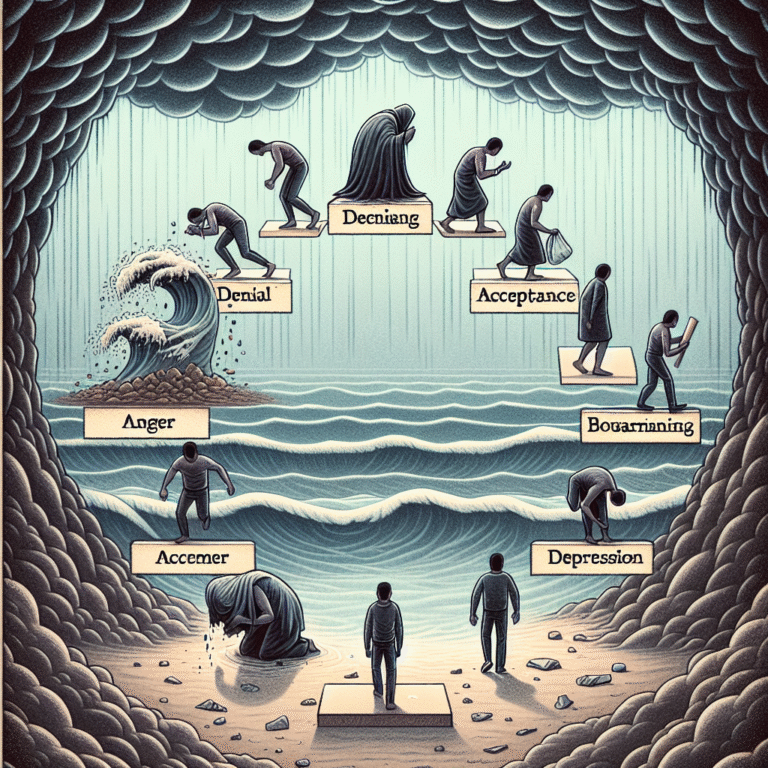
First Signs of Trouble: How to Recognize Anxiety Disorders Early – The Essential Guide
Introduction
Anxiety disorders are among the most common mental health issues worldwide, affecting millions of individuals from various walks of life. The first signs of trouble, however, often go unnoticed, leading to a delayed diagnosis and treatment. Early recognition is crucial not only for effective intervention but also for better long-term outcomes. This comprehensive guide, First Signs of Trouble: How to Recognize Anxiety Disorders Early, aims to empower you with the knowledge to identify these early indicators, understand their implications, and take proactive steps toward mental wellness.
Imagine a world in which we can recognize anxiety disorders before they spiraled out of control—a world where understanding the first signs of trouble leads to proactive solutions. This article delves deep into the complexities of anxiety disorders, their symptoms, and vital steps to take when you begin to notice signs of anxiety. Whether it’s for yourself or a loved one, recognizing these signals can be the first step toward a healthier, more balanced life.
Understanding Anxiety Disorders
Anxiety disorders encompass various conditions characterized by excessive fear, dread, or worry. These include Generalized Anxiety Disorder (GAD), Panic Disorder, Social Anxiety Disorder, and specific phobias. Understanding these disorders is essential, as each one presents unique symptoms and challenges.
Common Types of Anxiety Disorders
Generalized Anxiety Disorder (GAD): Characterized by persistent and excessive worry about various aspects of daily life.
Panic Disorder: Involves recurrent panic attacks that bring about intense fear or discomfort, often accompanied by physical symptoms like heart palpitations and shortness of breath.
Social Anxiety Disorder: Causes overwhelming worry about social situations and fear of being judged or evaluated by others.
- Specific Phobias: Involves intense fear of specific objects or situations, which results in avoidance behavior.
Recognizing the first signs of trouble involves understanding the typical markers that differentiate everyday worries from anxiety disorders.
Early Signs of Anxiety Disorders
1. Persistent Worrying
One of the earliest indicators of anxiety disorders is persistent worrying. While it’s normal to have worries, being preoccupied with numerous issues on a daily basis is often an early sign of GAD.
Case Study: Sarah’s Story
Sarah, a 28-year-old teacher, found herself unable to focus on her lessons because she was constantly worrying about her students’ performance. This overwhelming concern affected her professional life and self-esteem. Sarah’s story illustrates how recognizing excessive worrying can prompt an earlier intervention.
2. Physical Symptoms
Physical manifestations of anxiety can often be overlooked. Symptoms like muscle tension, headaches, and fatigue could indicate heightened anxiety levels.
Table 1: Common Physical Symptoms of Anxiety Disorders
| Symptom | Description |
|---|---|
| Muscle Tension | Consistent stiffness or pain in muscles |
| Fatigue | Unusual tiredness despite adequate rest |
| Heart Palpitations | Rapid or irregular heartbeat during stress |
| Gastrointestinal Issues | Nausea, diarrhea, or changes in appetite |
3. Avoidance Behavior
People may start to avoid places, situations, or even certain conversations that provoke nervousness. This avoidance can be a prominent early sign.
Analysis
Sarah began to skip social gatherings with friends because the thought of interacting made her anxious. Recognizing this behavior can serve as a crucial early warning signal.
4. Changes in Sleep Patterns
Anxiety frequently disrupts sleep, leading to insomnia or excessive sleeping. These changes in sleep quality can significantly affect day-to-day functioning.
Case Study: Mark’s Sleepless Nights
Mark, a software engineer, experienced sleepless nights filled with racing thoughts about work deadlines. His deteriorating sleep marked the first signs of trouble. Upon seeing a professional, he learned effective coping strategies, illustrating the importance of treating sleep disturbances early.
5. Irritability and Mood Swings
Increased irritability can be a subtle sign that something isn’t quite right emotionally. This symptom can often be mistaken for personality changes, but it could indicate underlying anxiety.
The Importance of Early Recognition
Understanding and identifying the first signs of trouble is key to managing anxiety disorders effectively. Early intervention can lead to tailored treatments that may include therapy, medication, or lifestyle changes.
Benefits of Early Intervention
- Improved prognosis: Early treatment often leads to better outcomes and faster recovery.
- Reduced severity of symptoms: Minimizing symptoms can enhance quality of life.
- Enhanced coping strategies: Professional guidance helps build effective coping mechanisms.
Practical Steps to Take
Once you’ve recognized the first signs of trouble, what steps should you take?
Consult a Professional: Seeking advice from a mental health professional can help gauge the severity of the signs.
Educate Yourself: Understanding anxiety disorders aids not only in managing personal symptoms but also in supporting loved ones.
Implement Healthy Lifestyle Changes: Regular exercise, mindfulness practices, and a balanced diet can significantly contribute to emotional health.
- Build a Support Network: Surrounding yourself with understanding friends or family can foster an environment conducive to recovery.
Table 2: Early Intervention Strategies
| Strategy | Description |
|---|---|
| Professional Help | Consulting a psychologist or psychiatrist |
| Educational Resources | Utilizing books and online courses for knowledge |
| Lifestyle Adjustments | Incorporating exercise and balanced nutrition |
| Support Groups | Joining a support network for shared experiences |
Conclusion: Taking Charge of Your Mental Health
Recognizing the first signs of trouble in the form of anxiety disorders can be challenging. However, armed with the right information, the journey toward mental wellness becomes less daunting. As you take proactive steps—whether for yourself or a loved one—the goal is to foster an environment where mental health is prioritized.
It’s time to break the stigma surrounding mental health and encourage open conversations. By understanding the first signs of trouble and acting wisely, you can change the trajectory of anxiety disorders—ensuring a healthier, happier future for yourself and those you care for.
FAQs
1. What are the first signs of anxiety disorders?
The first signs can include persistent worrying, physical symptoms like fatigue or muscle tension, avoidance behaviors, changes in sleep patterns, and increased irritability.
2. How can I support a friend showing signs of anxiety?
Encourage them to talk about their feelings, listen without judgment, and suggest they seek professional help if necessary. Having a support system can make a significant difference.
3. Is anxiety a normal part of life?
Yes, experiencing anxiety in small doses is normal. However, it becomes a concern when it interferes with daily life or leads to avoidance behaviors.
4. What treatments are available for anxiety disorders?
Treatment options include cognitive-behavioral therapy (CBT), medication, lifestyle changes, and support groups tailored to individual’s needs.
5. How can I reduce my anxiety levels naturally?
Incorporating regular exercise, practicing mindfulness or meditation, getting enough sleep, and maintaining social connections can help lower anxiety levels.
By acknowledging and acting on the first signs of trouble: how to recognize anxiety disorders early, we can foster a culture that prioritizes mental health and supports individuals on their journey to well-being. Remember, the earlier the recognition, the better the outcome.











